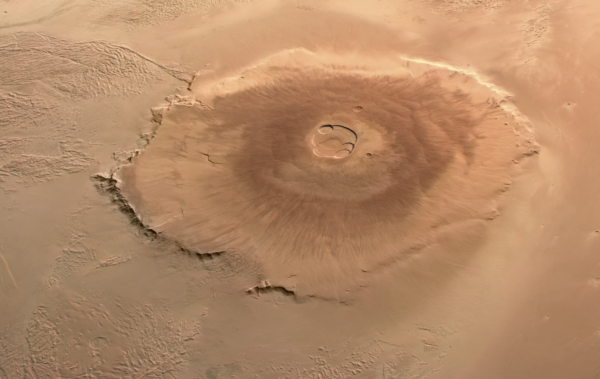New analysis of Mars’ gravitational field reveals hidden structures buried beneath remnants of ancient oceans. This study, presented at the European Planetary Science Congress in Berlin on September 13th, could provide further support for growing evidence suggesting that geological activity on the red planet is not as dormant as previously believed.
These structures are covered by a thick and smooth sediment layer, which may have once been the seabed, with a significantly higher density than the surrounding environment. The exact origin of the sediment remains unclear at the moment.
Explaining these newly detected anomalies is a complex task. According to Bart Root, an assistant professor at the Technical University of Delft in Denmark, the density of these structures is approximately 300 to 400 kilograms per cubic meter higher than the surrounding environment. They could have formed from volcanic activity or ancient impact events, such as meteorite collisions, indicating a long history of such occurrences on Mars.
“We have identified about twenty different sized features in the region near the North Pole, with one resembling a dog shape,” Root stated in a declaration regarding the work. “There seems to be no traces of them on the surface, but through gravity detection data, we have gained some understanding of the ancient history of Mars’ northern hemisphere.”
This discovery was made using images of Mars’ gravity field obtained from orbiting satellites, combined with seismic data collected by NASA’s InSight lander on the Martian surface.
In addition to the dense structures beneath the Martian surface, the research also revealed another underground secret: the Martian mantle layer appears to still be active, with geological activities possibly providing energy to Olympus Mons, the largest volcano known in the solar system.
The study also detected another gravity anomaly area beneath a volcanic plateau named Tharsis Rise, where Olympus Mons is located. Research indicates that beneath this extremely dense area lies a low-density region nearly 700 miles deep.
Root suggested that this could be a giant plume of magma with a diameter of about 1,000 miles rising slowly to the surface within the Martian mantle.
“This suggests that we need to rethink how Olympus Mons and its surrounding areas are supported from below,” Root stated, “indicating that active geological activity may still exist within Mars’ interior, potentially leading to the formation of new volcanoes on the Martian surface.”

